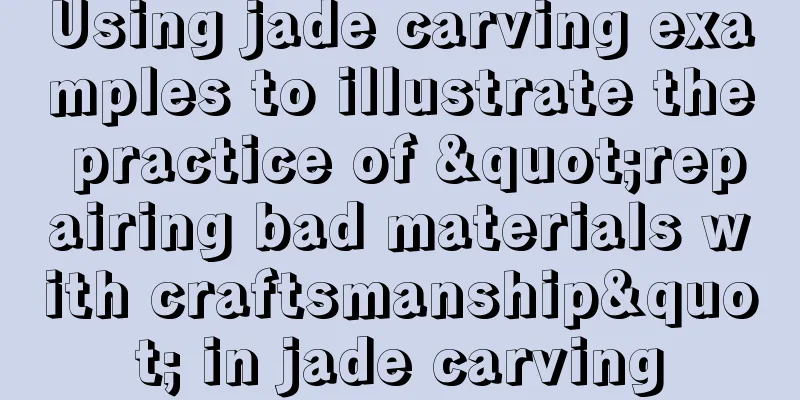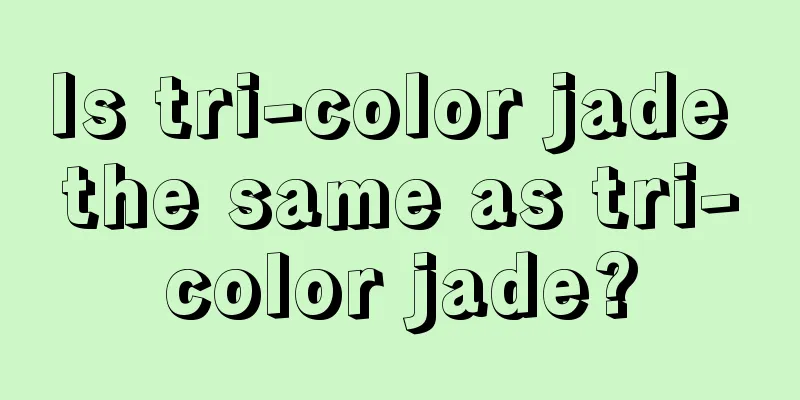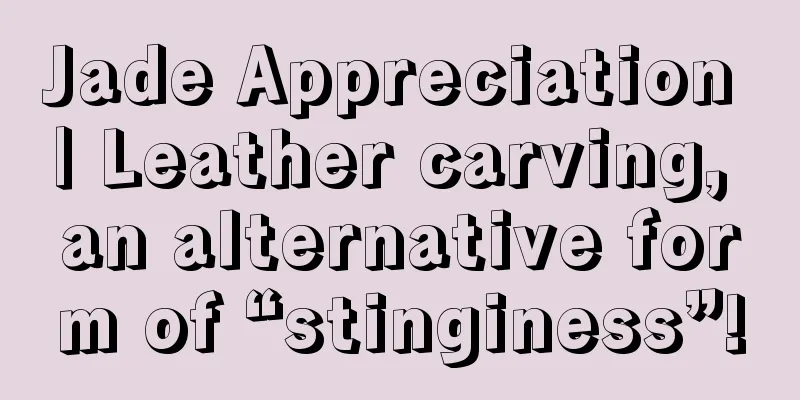Using jade carving examples to illustrate the practice of "repairing bad materials with craftsmanship" in jade carving

|
In high-end jade, the carving of jade has little impact on the overall value of the finished product, but in general jade, the carving of jade affects the value of the finished product, just as the popular saying in the jade carving circle says: "If the material is not good, the craftsmanship can save it." Just like the small material I want to share today, its shape is large in the middle and small on both sides. Under the light we can see that the water quality is just ordinary glutinous ice material, and the base is average. Its advantage is that it has no obvious flaws. Judging from the quality and shape of this material, it is suitable for making lucky melons, but there will not be much surprise when making lucky melons from this material, and the value of the finished product is also average! Because of this value situation, the jade carving master decided to try the idea of "if the material is not good, the craftsmanship can save it" to create this material. After weighing and analyzing, he finally composed the material into an octopus-themed pendant according to the shape of the jade: this composition arranges the octopus's big round head on the protruding part in the middle of the jade, and reasonably divides the octopus claws around it. The carving uses a combination of round carving and openwork carving to carve patterns, and the octopus's eight claws are carved through openwork. These hollow parts increase the ability of light to penetrate jade, improve the refraction of light, and play a role in regulating the water of the octopus, making the finished product more transparent and jade-like. On the back of the three-dimensional round sculpture, the line pattern echoes the front shape, and the copper coin designed at the bottom of the octopus serves as the "finishing touch" - the octopus is commonly called octopus, and in jade carving culture, "eight" is homophonic to "fa", and the octopus has eight claws, so the combination has the beautiful meaning of making a fortune! When we finally pick up the goods, we can see that although the natural water quality of the jade is average, through clever water adjustment techniques, it also has a faint sticky feeling. If you use jadeite with this kind of effect to carve a melon, it is destined to be a very ordinary jade pendant. But this carved octopus pendant, although not high-end jadeite, is definitely a very special masterpiece! fcgc66 fcpf18 |
>>: The Guanyin statue carved from ice-blue jadeite is solemn and majestic.
Recommend
Be careful when buying jade! These types of jade with the word "翠" have nothing to do with jadeite!
More and more people like to wear jade jewelry, b...
Jade carving, fun is the driving force of creation
Jade has a long history. Over the long years, our...
How to choose good jadeite?
1. Jade has two basic indicators: one is color, a...
The process of the master carving the jade "Northern Achievement Buddha" is really a true masterpiece.
Today I will show you the process of a master car...
Investment and Collection of Jadeite
Now let’s discuss with you the topic of jade inve...
Jade Appreciation | Oily Green, the Beauty of Gray Tone
As the name suggests, Youqing is a kind of jade t...
The best representation of love among all jade items is not the jade ring, but another kind of jade ornament.
When it comes to jade jewelry that best represent...
Color classification of violet jadeite, a must-read for novice buyers!
There is a classic saying in the jewelry industry...
The Damakan jade carving of little angels is very cute.
Jade must be crafted, the craftsmanship must have...
How to choose the interface you want
Jade is a gathering of the earth's spiritual ...
Why is the price of ice jadeite raw stone so expensive? What makes it so expensive specifically?
Different from the warmth of ordinary jade, ice j...
What is the advantage of “plain and smooth” jade?
Friends who like jade may find that the jade jewe...
Three methods to identify jadeite
First, let's talk about the types of fake jad...
Intuitive identification of jade quality
1. Look at the quality: The three elements of jad...
Several Methods for Identifying Natural Jade
Friends often hold up a piece of jade and ask me ...









